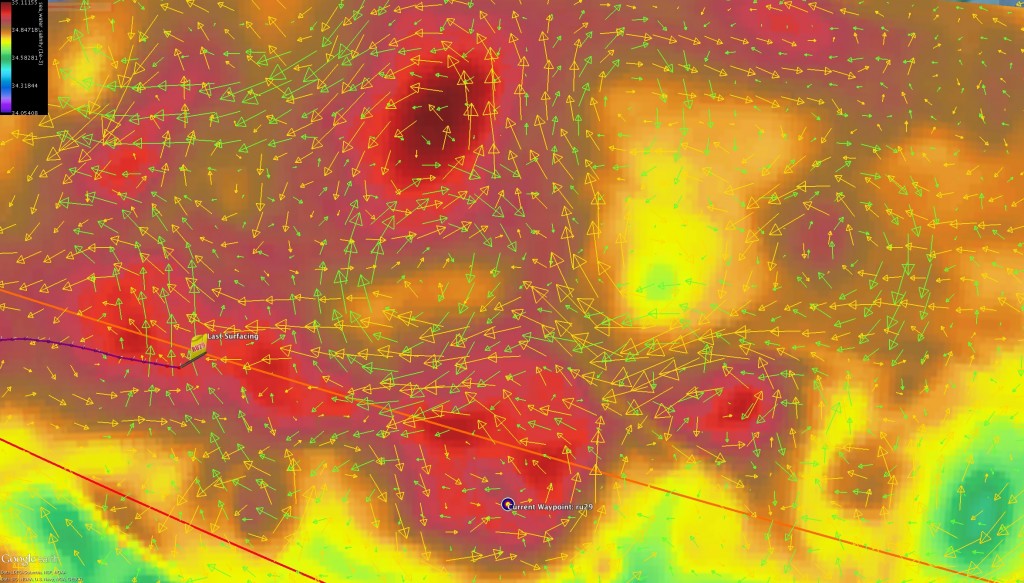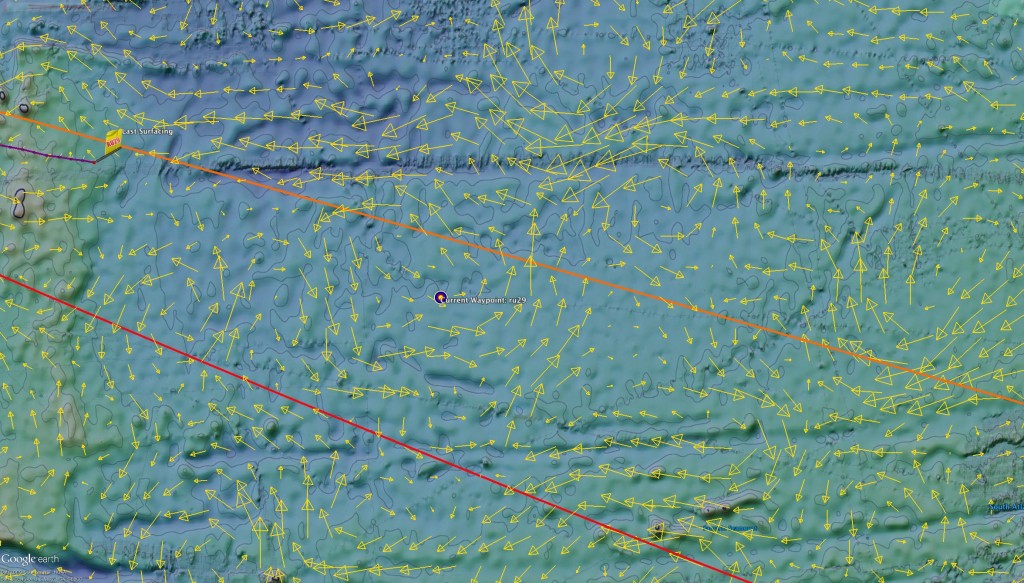After we last heard from RU29 Friday morning, the glider gave us a scare by not calling in until we were well into Saturday.
In total the glider was silent for about 23 hours before it called in to Teledyne’s dock server. After discovering this, Dave was able to grab a hold of it and get it back under control.
Now that Challenger is back, a new way point as 34˚ 30’S, 6˚ 00 E was issued to try and get the glider flying at a good angle as we enter the next eddy. Once the entrance is made, the way point will be shifted as we do our best to ride the strong currents that lie ahead instead of dissecting the eddy through the middle. Once we make our way through this eddy, we will be just 3 more major eddies away from a recovery approach in South Africa
RU29 in now less than 1400 km from Cape Town as the crow flies; assuming the crow follows the great circle route.
The purple line in the image above is the likely path Challenger will take as we navigate the remaining eddy field dipicted by the Copernicus currents. This predicted path is roughly 150 km longer at ~1550km between 29s last position and our goal.
Diagnostics wise, power use is still holding steady at 2.3 AH/day which will allow for about 146 more days on the battery clock. Current speed made good towards Cape Town is also running about 28 km/day which means if all continues to go well we can reach our goal in about 60 more days. Finally Steering rms error is still about 15 degrees.
Force Wind Sea & Honor
































